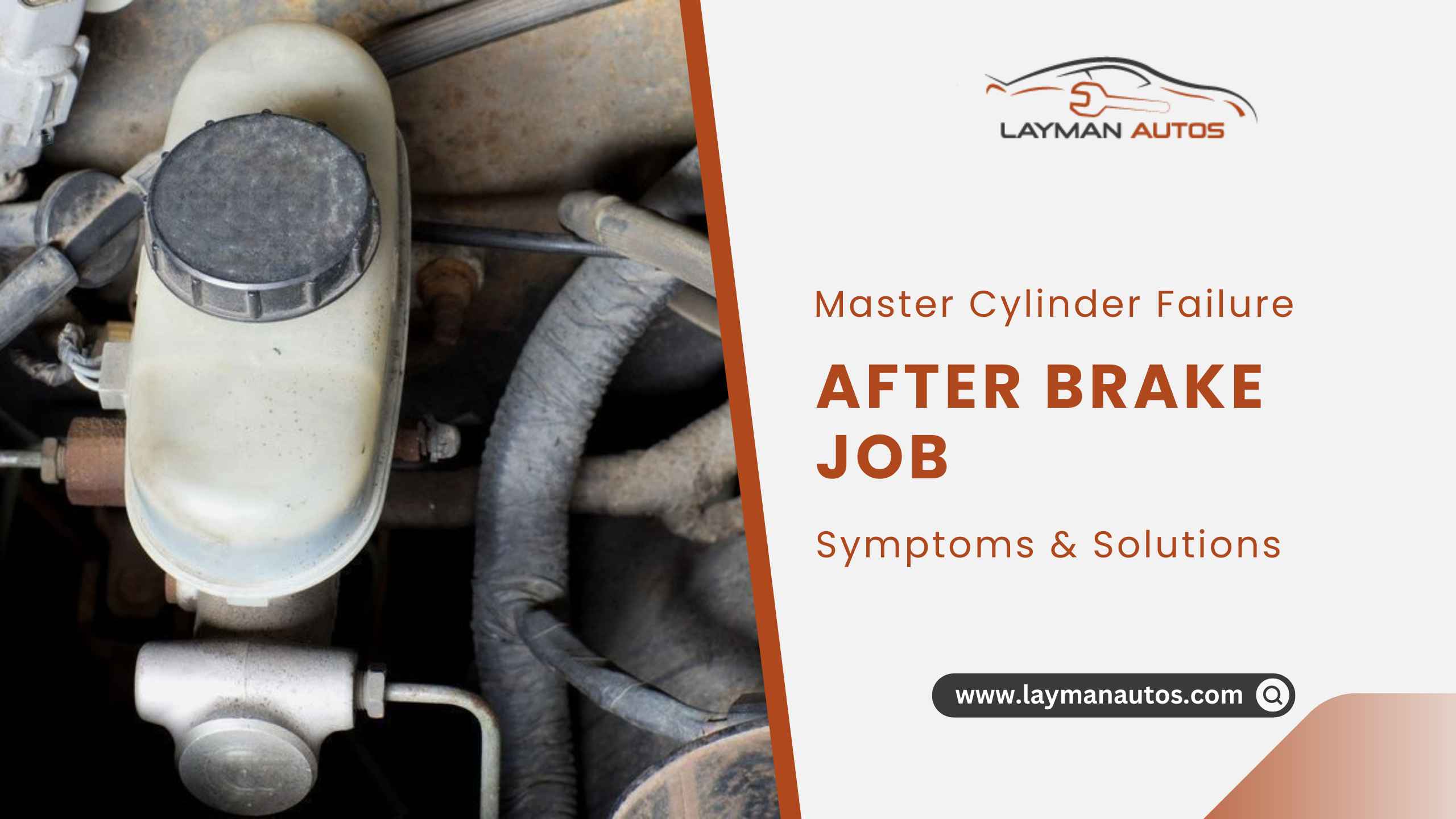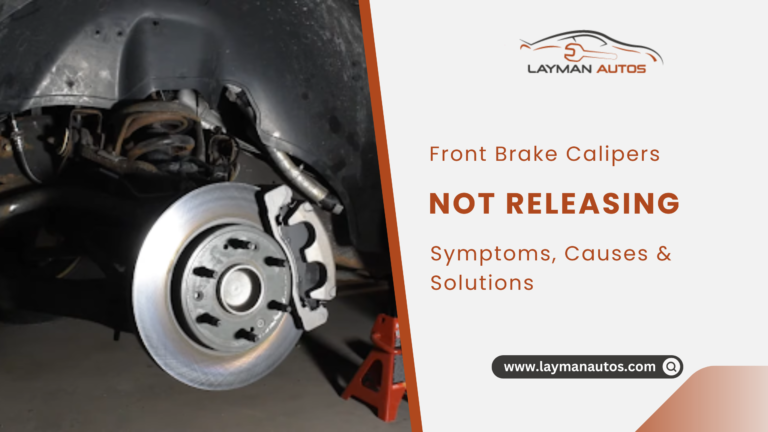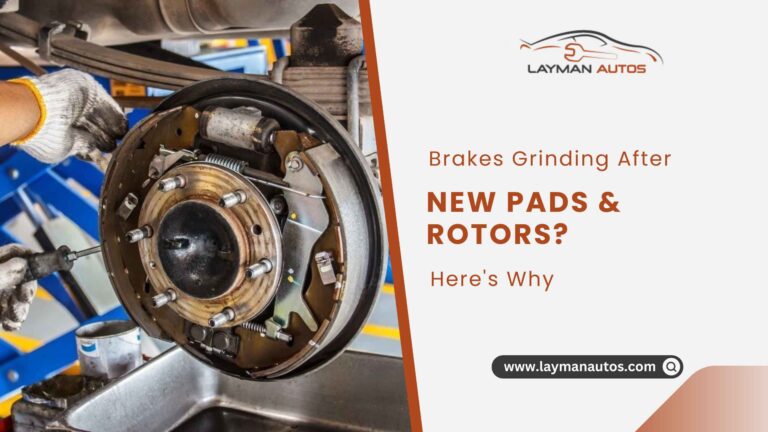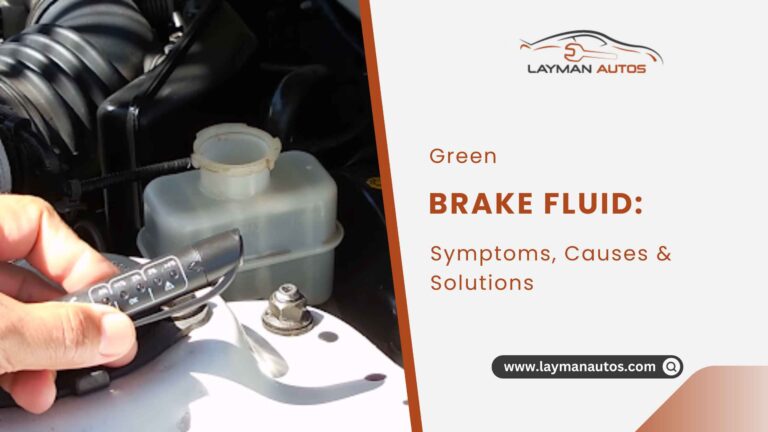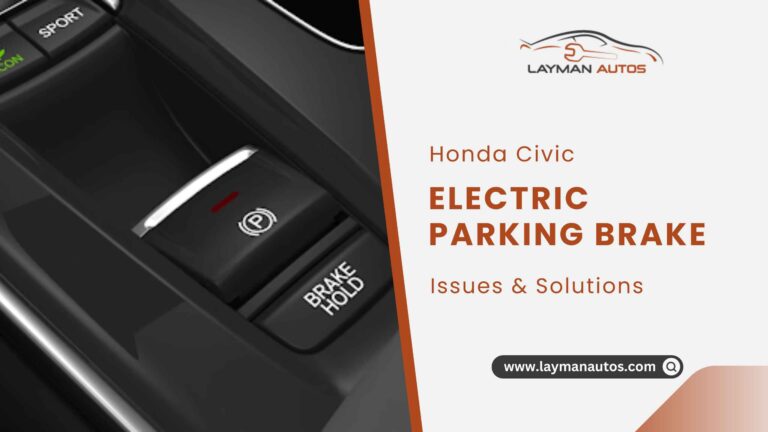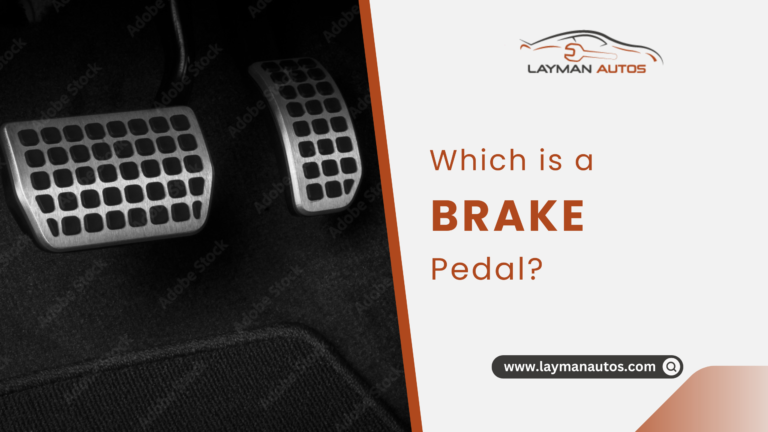Master Cylinder Failure After Brake Job: Symptoms and Solution
When you push on the brake pedal, the force is transferred from your foot to the automobile’s brake master cylinder, where it is transformed into hydraulic pressure to slow the car.
When you press the brake pedal, fluid from the master cylinder is pushed into the rest of the braking system, changing the pressure and resulting in Master Cylinder Failure after Brake Job. Whether your car has disc brakes or drum brakes, this function is performed by the brake master cylinder. A brake master cylinder is an integral part of any braking system.
The purpose of the master cylinder, how it operates, and the signs of a failing master cylinder are all covered in this article.
What Is The Master Cylinder?
The brake master cylinder is a component of the braking system that transmits the force applied to the brake pedal to the wheels’ braking mechanism. It’s the nerve center of your car’s stopping power.
When the brake pedal is depressed, hydraulic pressure is created by forcing a piston through the brake cylinder. The force of this action forces hydraulic fluid into the brake lines, where it presses against a secondary cylinder located in the braking system of each wheel.
In disc brakes, the piston of the brake calipers is engaged by the force of the secondary cylinders (the wheel cylinder in drum brakes). The movement eventually brings the wheel to a halt. Brake master cylinders and clutch master cylinders serve different purposes in manual transmission vehicles.
Where Is The Master Cylinder Found?
The master cylinder of a vehicle with manual brakes is typically mounted to the firewall and connected to the brake pedal.
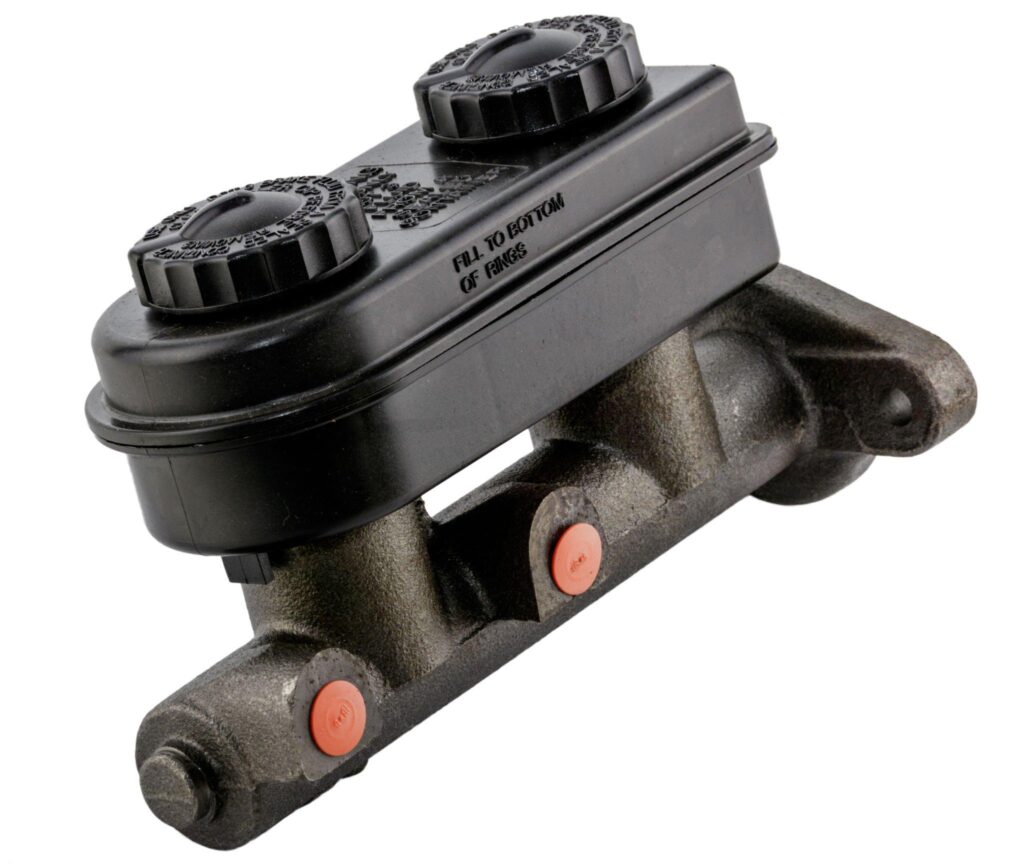
The master cylinder is coupled to a brake booster in vehicles with power-assisted braking, which increases the force available for braking. The brake pedal is connected to the booster, which is mounted to the engine compartment firewall.
To better understand the master cylinder and its role in the braking system, let’s have a look at how it operates on the inside:
How Do Master Cylinders Work?
The “tandem” design is used by the vast majority of master cylinders (sometimes called a dual master cylinder).
- The cylinder bore of the tandem master cylinder is shared by two separate master cylinders housed in a single housing. So, the cylinder assembly may operate two independent hydraulic systems. The brakes on a single set of wheels are managed by a separate circuit.
- Front/rear (two front and two rear) and diagonal (left-front/right-rear and right-front/left-rear) circuit configurations are possible.
- This ensures that the car can be stopped even if one of the braking circuits fails.
The master cylinder in most automobiles is linked to the rest of the braking system through a proportioning valve. It regulates how force is applied to the front and back brakes to ensure consistent stopping power.
How The Master Cylinder Influences Braking Performance
The diameter of the bore of the master cylinder is a crucial variable in determining stopping power. The brake pedal’s feel and the amount of force required to stop will change if the cylinder diameter is altered.
- A brake pedal that is too hard to push or a brake pedal that doesn’t move far enough to generate appropriate braking pressure is the result of a cylinder bore diameter that is too big.
- If you have to press the brakes hard (because of the high resistance) and they engage too quickly, you might wind up with a jittery automobile.
- Too narrow of a cylinder bore size may cause issues like:
- The brake pedal is “soft” if it requires less pressure to apply the brakes.
- Creating braking pressure requires a sizable effort, or “long stroke,” from the brake pedal.
You’ll have to apply more pressure to the pedal before the brakes engage. In traffic congestion or when you need to pull over quickly, this is not an ideal situation.
What Are the Symptoms of a Faulty Brake Master Cylinder?
As soon as the brake master cylinder begins to fail, there will be a number of obvious signs. A broken brake master cylinder is an emergency situation that needs quick attention. Operating a vehicle without fully functional brakes is quite risky. Here are the most obvious signs that your braking master cylinder needs to be replaced.
1) Warning Light
When the brake warning light comes on, it’s the first sign that anything is wrong. An issue with the braking system has been detected, albeit it may not be the brake master cylinder itself.
Sensors in the braking system can tell whether the brake fluid pressure is lowering, and if they do, it’s probably due to a faulty brake master cylinder. The alarm will sound as a consequence.
In the event that your vehicle’s ABS warning light illuminates, it is possible that a faulty brake master cylinder is to blame.
2) Brake Fluid Leak
To generate the hydraulic pressure required for braking, the brake master cylinder requires a specific amount of brake fluid.
The brake fluid level will almost certainly be low if the brake master cylinder is leaking braking fluid or if the reservoirs on the cylinder containing the fluid are not securely fastened.
Because of this, you will have a harder time controlling the car’s speed. If the brake master cylinder fails, you will need to replace it.
3) Spongy Brake Pedal
When the brake pedal becomes soft when you press on it with your foot, it’s a solid indicator that something is wrong with the brake master cylinder.
Rubber seals within the cylinder hold the braking fluid and protect it from leaking out. Brake fluid might leak inside if these rubber seals wore out or were broken. The brake pedal would become soft and mushy as a result.
4) Brake Fluid Contamination
Worn rubber seals can also cause pollution in the braking fluid, which can cause additional problems. The seals assist keep the braking fluid within and keep out dirt and debris that may contaminate it.
If this were to occur, the force applied when you depressed the brake pedal would be less. You’d have to put more foot to pedal before the car would slow down normally.
The color of the fluid can also be checked visually. It has to be transparent, maybe with a hint of yellow. If it’s a muddy brown color or is starting to become black, your brake fluid is probably polluted. The master cylinder cap’s underside might possibly be grimy.
5) The Brake Pedal Is Sinking
Following these additional signs, you may find that the brake pedal does not return to its normal position when you lift your foot off it. As an alternative, it will fall to the ground.
As this might quickly become a dangerous situation on the road, you should get the brake master cylinder fixed as soon as possible.
6) Bad Brake Bias
Dual-circuit braking master cylinders send fluid to each set of wheels independently. This is done so that if a leak were to occur on one side of the system, a complete loss of brakes wouldn’t occur.
These circuits typically operate a single set of wheels, usually one set of front wheels and one set of rear wheels. For instance, one circuit may be shared by the left front and right rear wheels, while another could be shared by the right front and left rear wheels.
The car may pull to one side when braking if a circuit has broken. It will be more noticeable while braking heavily, as the front brakes are responsible for a greater portion of the stopping force than the rear brakes.
7) Inconsistent Wear on the Brake Pads
If just two of your vehicle’s wheels are allowed to use the brakes due to a faulty circuit, your pads will wear at different rates. You’d see more wear and tear on the right front and left back of a car than you would on the left front and right back.
One circuit might fail due to a leak in the brake line or a leaking piston in the master cylinder. Brake master cylinders are likely to be at fault if you experience shaky stops, uneven pad wear, or directional instability while using the brakes.
8) Decreased Braking Power
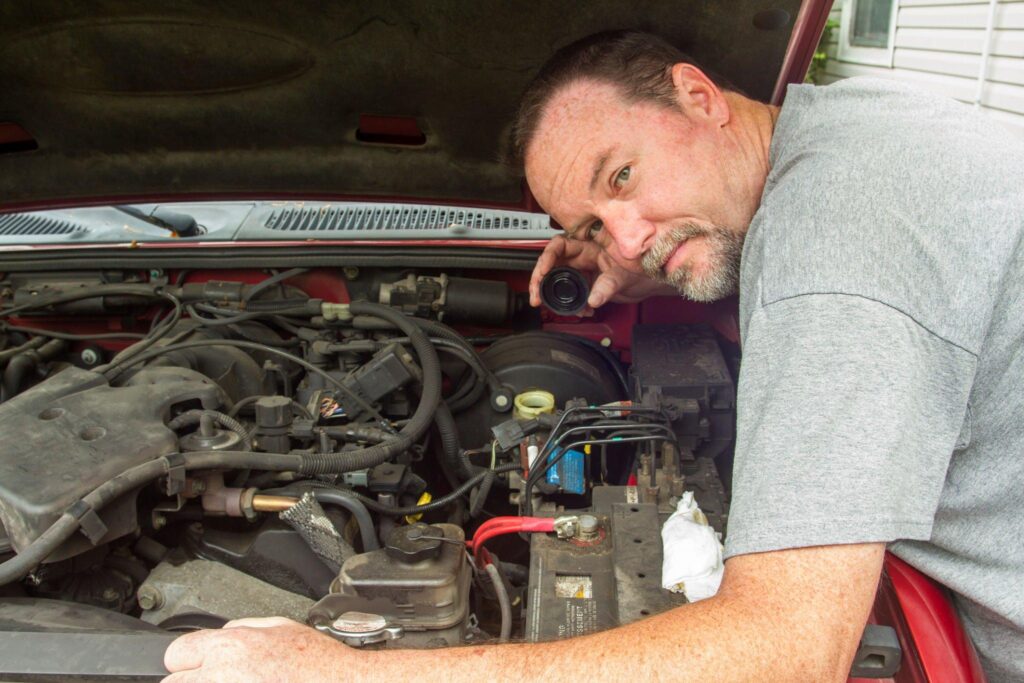
The failure of either the front or rear brakes may frequently be traced back to a malfunctioning master cylinder. Your vehicle will require more time and distance to come to a halt or slow down due to the significant decrease in braking force. In the event of an emergency that necessitates the use of emergency brakes, this additional stopping distance might be disastrous.
The loss of braking force may seem like a telltale sign that your brake master cylinder needs replacing, but there are numerous other problems that might cause this symptom, such as air in the brake lines, outdated brake fluid, or broken brake lines or hoses. However, you should always take braking problems seriously since they endanger you and other drivers.
9) The Brake Pedal Acts Strangely
The brakes should respond quickly and strongly to your foot’s steady pressure on the pedal. An inoperable master cylinder might cause a spongy, unresponsive brake pedal because of a loss of pressure in the system.
Restoring system pressure may alleviate symptoms temporarily, but if the problem lies elsewhere, the faulty braking behaviors will reappear.
A spongy brake pedal is usually caused by air in the brake lines, which may be fixed by changing the fluid. The worst-case scenario, however, is that the pedal just falls to the floor of your car and does not return to its normal position.
Never risk driving with a sagging brake pedal; instead, have a professional inspect the master brake cylinder.
Brake Master Cylinder Replacement
You can replace your master cylinder by following these steps:
1) Drain the Existing Fluid
The old brake master cylinder must be removed as the initial step in brake master cylinder repair. A device known as a vacula is required for this task. The device consists of a vacuum apparatus with a skinny tube and a plastic storage case. It is important to flush the brake lines after removing the old master cylinder’s fluid to ensure that the new fluid is not tainted.
2) Take Off the Master Cylinder
Loosening the brake lines leading to the master cylinder is the first step in replacing the cylinder. Remove the two to four bolts that secure the master cylinder to the brake booster and move the lines out of the way. When all of the bolts are gone, the engine compartment may be pulled out using the master cylinder.
3) Clean and Transfer the Parts
The reservoir may or may not be included with the replacement master cylinder you want to use. Pull it off the existing master cylinder. This is usually a very simple feat to do. Once the reservoir has been taken out, a thorough cleaning is required to ensure that no material remains. Master brake cylinder replacement may commence as soon as you push it onto the replacement component.
4) Changing the Master Brake Cylinder
Install a new gasket and ensure the new master cylinder is aligned properly on the brake booster. The bolts must then be tightened as directed by the manufacturer. The brake lines must now be reconnected. Please don’t go off-topic. Afterward, snug them up as needed.
5) Fill and Bleed the Master Cylinder
Once you’ve finished swapping out the master cylinder, you may fill it with DOT 3 brake fluid. For starters, you may totally load up the master cylinder. Keep applying pressure on the brakes until the pedal becomes rigid. To guarantee gravity bleeding, loosen the bleeder screw on each calliper and leave it that way for 15 minutes.
You’ll need an extra set of hands to accomplish a complete bleed. Hold the brakes after your companion has pumped them until they are firm. Slowly release the bleeder screw as your companion presses the brakes. Repeat this process until fluid begins to leak from the brake’s bleeder screw.
Replacing the master cylinder is an easy task to do. This can save you labor costs.
6) Final Check and Test Drive
Verifying the fluid level in the master brake cylinder is the final step in fixing the cylinder. Do not inject more fluid than there is off the brake pad left. If there is still just half of the brake pad left, fill it no farther than the halfway point between the “low” and “full” touchlines. The pads are below the indicator just when it says so.
See that everything is in working order by taking your car for a spin.
The Price of Replacing a Master Cylinder for Brakes
Repairing or replacing a faulty brake master cylinder typically costs between $320 and $500. The component alone will only set you back between $100 to $210. However, between $230 and $300 in labor expenditures will make up the bulk of the replacement project’s overall budget.
You might save a tonne of money on labor charges if you knew what you were doing when it came to autos and brake systems. However, you’ll need some mechanical know-how for this job or you might end up making problems worse.
Many master cylinders may be swapped out by simply removing the cylinder from the firewall, removing the brake lines, and inserting the new cylinder. Following this process, the braking system must be bled. Find out how to bleed correctly by consulting a service handbook.
Keep in mind that bleeding ABS systems can be a bit of a challenge. Please take your car to a reputable technician if you are unsure of how to fix it.
Frequently Asked Questions
What can cause a brake master cylinder to fail?
Piston-bore wear and piston-seal failure are the most prevalent causes of master-cylinder failure. When the master cylinder fails, the brake pedal will “dive,” or slowly sink to the floor, when pressure is applied to the pedal.
Leaks around the master cylinder are another warning flag. When a seal fails, fluid might flow through it and onto the pushrod that connects the brake pedal to the floor. Check for leaks in the cylinder’s connecting lines as well.
The master cylinder should be changed if the leak is coming from within one of the seals, but if the leak is coming from outside, a new line or fitting may be necessary.
When bleeding brakes, is there a risk of damaging the master cylinder?
Pumping the pedal all the way to the floor might harm the master cylinder’s piston seals if they aren’t already leaking. Start with the master cylinder and bleed all lines before moving on to the wheels. Never allow the brake fluid level in the reservoir to go too low.
Conclusion
Similar to how the heart pumps blood throughout the body, the brake master cylinder is the “engine room” of the braking system. It regulates the amount of fluid reaching your car’s vital components and the pressure at which it operates.
If the master brake cylinder is malfunctioning, the entire braking system is in jeopardy, so if you notice any problems with it, you should get in touch with a professional or mechanic right away to see if a replacement is necessary.

